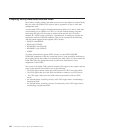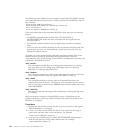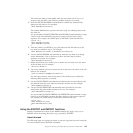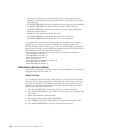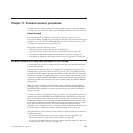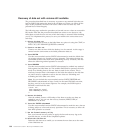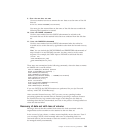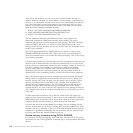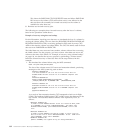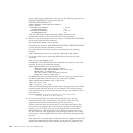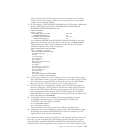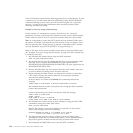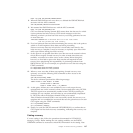There are several methods you can use to recover data sets after the loss of a
volume. Whichever method you use (whether a volume restore, a logical data set
recovery, or a combination of both), you need to ensure SMSVSAM puts data sets
into a lost locks state to protect data integrity. This means that, after you have
carried out the initial step of recovering the volume, your data recovery process
must include the following command sequence:
1. ROUTE *ALL,VARY SMS,SMSVSAM,TERMINATESERVER
2. VARY SMS,SMSVSAM,FORCEDELETELOCKSTRUCTURE
3. ROUTE *ALL,VARY SMS,SMSVSAM,ACTIVE
The first command terminates all SMSVSAM servers in the sysplex and
temporarily disables the SMSVSAM automatic restart facility. The second
command (issued from any MVS) deletes the lock structure. The third command
restarts all SMSVSAM servers, as a result of which SMSVSAM records, in the
sharing control data set, that data sets are in lost locks state. The automatic restart
facility is also reenabled.
Each CICS region detects that its SMSVSAM server is down as a result of the
TERMINATESERVER command, and waits for the server event indicating the
server has restarted before it can resume RLS-mode processing. This occurs at step
3 in the above procedure.
It is important to realize the potential impact of these commands. Deleting the lock
structure puts all RLS-mode data sets that have retained locks, or are open at the
time the servers are terminated, into the lost locks condition. A data set which is in
lost locks condition is not available for general access until all outstanding
recovery on the data set is complete. This is because records are no longer
protected by the lost locks, and new updates can only be permitted when all
shunted UOWs with outstanding recovery work for the data set have completed.
When CICS detects that its server has restarted, it performs dynamic RLS restart,
during which it is notified that it must perform lost locks recovery. During this
recovery process, CICS does not allow new RLS-mode work to start for a given
data set until all backouts for that data set are complete. Error responses are
returned on open requests issued by any CICS region that was not sharing the
data set at the time SMSVSAM servers were terminated, and on RLS access
requests issued by any new UOWs in CICS regions that were sharing the data set.
Also, indoubt UOWs must be resolved before the data set can be taken out of lost
locks state.
For RLS-mode data sets that are not on the lost volume, the CICS regions can
begin lost locks recovery processing as soon as they receive notification from their
SMSVSAM servers. For the data sets on these other volumes, recovery processing
completes quickly and the data sets are removed from lost locks state.
For those data sets that are unavailable (for example, they are awaiting forward
recovery because they are on the lost volume), CICS runs the backouts only when
forward recovery is completed. In the case of CICSVR-managed forward recovery,
completion is signalled automatically, and recovered data sets are removed from
lost locks state when the associated backouts are run.
Volume recovery procedure using CFVOL QUIESCE
If a volume is lost and you logically recover the data sets using CICS VR, you do
not need to use the CFVOL QUIESCE command (step 1 in the procedure described
below).
190 CICS TS for z/OS 4.1: Recovery and Restart Guide



